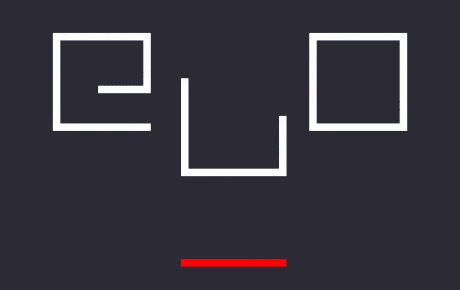This entry was drafted at the University of Bremen, Germany, during the Summer Semester 2017, as part of the “Key Topics in Linguistics: Human-Machine: the process of meaning-making in digital texts” taught by Dr. Daniela Côrtes Maduro. The following text is based on an artist talk given by Ian Hatcher, on the 11th of May 2017.
Ian Hatcher, a writer, performer, and programmer from New York, visited the University of Bremen on the 11th of May 2017 to give an interesting artist talk. One example of his creative mixture of code and poetry is Opening Sources, an Internet poem that is constantly changing.
The poem Opening Sources gives the reader freedom to rewrite the word blocks of the poem. Suddenly the reader becomes a co-author, together with other readers. The writing process is anonymous and none of the versions are saved. In my opinion, the collaboration between the readers of this text is a very interesting way to approach the concept of a poem. Usually poems stay how they are originally written, but in this case, the whole text keeps on evolving. Every time Hatcher visits the poem’s website, the content is a surprise, even for him. During the artist talk, Hatcher said that it was remarkable to see how readers started to use this mechanism of the poem in their own ways. At first, Hatcher thought that one variable slot in this poem was meant to be a place for one word. Soon the readers began to experiment with the mechanism and started to input more words into one slot, because the program would allow it.
Other example of Hatcher’s Internet poems is a nameless poem published in the Imperial Matters website. In this poem, the text is at first just a very thin vertical line. When the reader mouse over this line, the text appears as a vertical column. The text moves so fast that it is almost impossible to read it. According to Jacob Nielsen’s (cited by Hayles) eye tracking research, readers usually read the web sites in a F pattern. This means, that the reader usually starts by reading a couple of lines in the upper part of the website, and when continuing further down the page, the width of the text scanned by the reader’s eyes gets smaller. Eventually, after reaching the bottom of the page, the eyes are travelling near the left margin of the page. In this Hatcher’s poem, reading conditions are extreme. As a reader, I just stare at the drastic movement of text, being able to read only a few words here and there.
Hatcher’s fast-moving Internet poem makes visible the phenomenon of information overload that we are facing every day. One known technique to surf successfully on the endless wave of information is hyper reading, the opposite of close reading. According to N. Katherine Hayles, hyper reading has become a necessity in digital environments, because we have to be able to gather and process large amounts of information. In this Hatcher’s poem, the reader can make the flow of information stop for a while just by mousing over the text. The flow of text becomes a stable black column that does not move at all. This makes the constant information overload to stop for a while.
During the artist talk, Hatcher mentioned that sometimes he feels unsatisfied working only with screens. Every now and then it is more rewarding to be able to convey the poem also as a live performance. Hatcher uses not only code, but also his voice as an artistic tool. Thanks to years of exercise, he has developed a unique skill and he is able to moderate his own voice without any additional equipment. This kind of voice sounds like it is generated by a computer and Hatcher uses it when performing his poems live. Sometimes, in live performances, Hatcher also leaves some space for improvisation and reads texts a bit differently than how they are written in his printed poem books.
During the artist talk, Hatcher performed his poem Private by using his distinctive, sounding like computer-generated, way of reading. The poem has been published as a printed chapbook in the year 2016. In this book, the text is printed on transparent pages divided into four different layers, which makes possible the further reorientation of the text. The poem Private explores the thin line between the desire to preserve privacy and to expose life in online environments. In the following excerpt, the reader can find a play with the word “private”. Readers can also read about the modern inner conflict felt by the modern subject surrounded by digital gadgets:
“Privately
I whisper a wish I deeply desire
For a private quiet life
I am a private person
I try to keep my suffering private
I do what I have to do to survive
Privately when I think about it, it makes me want to cry
Private grief
Privately I regret saying nothing about it
I send you a private message
In a private language
Make love in my writing
I write your name in my private diary
Online”
With these poems, Hatcher captures the fleeting nature of the digital world we live in. After all, we are just human beings, trying to adapt ourselves to the requirements of the fast-moving digitalness.
Works Cited
Hatcher, Ian.







